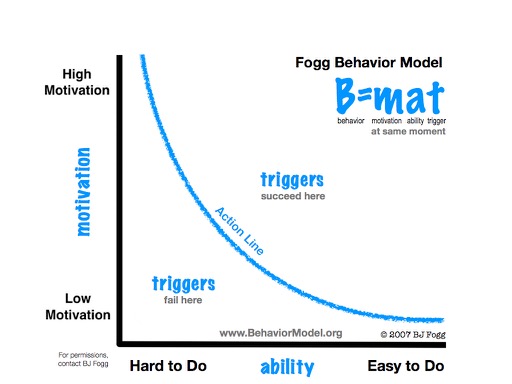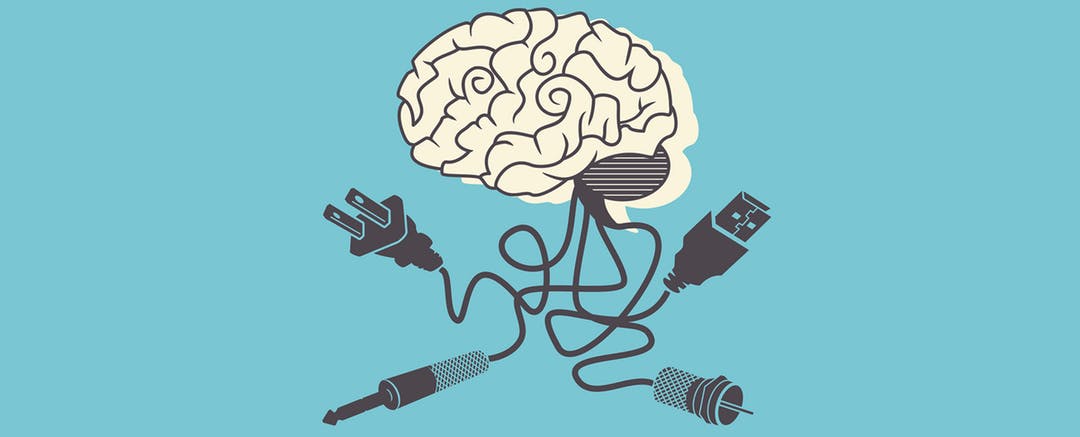Within BJ Fogg’s Behavior Design Lab, we focus on developing behavior design frameworks and methods that designers can use to help people do what they already want to do. Â As product developers and innovators we use these tools to create compelling experiences, products and services that people will repeat again and again.
The Fogg Behavior Model (FBM) defines a behavior thus:

Behavior = Motivation + Ability + Trigger
All three elements need to be present in order for the behavior to occur.
Small, simple behaviors can be elicited with low motivation as long as the ability is present and a clear trigger or call to action exists.
Complex behaviors may require more motivation and more ability. Â However, in the absence of a trigger, the desired behavior may not occur. Â
Finally high motivation and a good trigger coupled with low ability may result in no action. Â
Why Ability Matters
Ability dictates whether or not the action or behavior at hand is easy to do or hard to do. Â Does it require too much time? Â Does it require too much money? Â Does it require the person to think too much? Â Is it part of an existing routine? Â Is it socially deviant?
FBM and Game Design
Good game designers manipulate ability to create an engaging game experience. Â They generally don’t worry about motivation. Â People like to play games for a variety of reasons and if they’ve downloaded or purchased the game they’ve passed the motivation filter.
Good game triggers make clear what is necessary in the moment of game play – the card in a board game may outline a player’s 3 options or a social game like FarmVille prompts you to do one of three things – plant, harvest or buy seed.
Game designers can manipulate ability to establish and deepen engagement.  Some games may be intentionally easy to invoke confidence in the player.  When a player experiences early quick wins, he experiences a neurochemical response of increased testosterone and dopamine, inspiring confidence and a desire to take more risks.  This neurochemical boost can compel players to play again, play longer and be willing to play at a higher difficulty.
As game designers manipulate the ability dials (Is it easier or harder? Â Do they need to think more? Â Does it become suddenly physically challenging?), the designers create a dramatic tension in the game, eliciting player emotion. Â
The designer is anchored in behavior design principles – what do I want the player to do now?  What do I want the player to do after this? – while at the same time keeping an eye on the core loop of the game -Assess, Decide, Act and Reward.  The Core loop defines the dramatic arc of the game; FBM helps the designer tune the easiness of difficulty of each action in the game.  The neuro chemical hit coming from victory reaffirms the reward.Â





